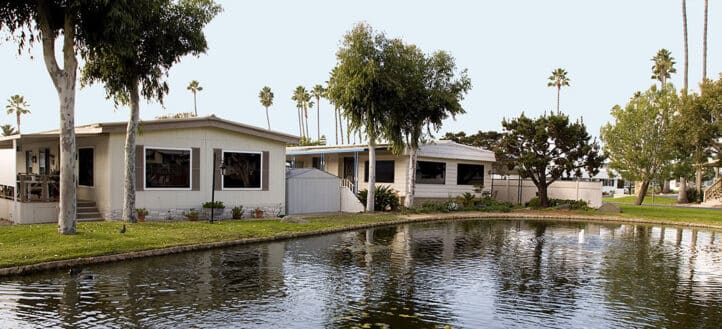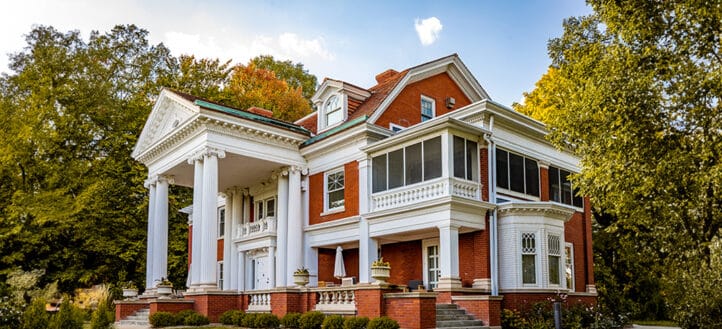Space launch
Meeting a surging demand for new self-storage solutions

The self-storage real estate sector has seen impressive growth recently, with over 250 million square feet of storage space built in just the past five years, according to Yardi’s StorageCafe. There are now over 50,000 self-storage properties in the U.S.—more than all the Subway, Dollar General, and CVS locations combined.
Self-storage customers cite moving to a new location and not having enough space as the top reasons for renting their storage units, according to StorageCafe. This directly aligns with the broader trends driving this growth. The ongoing housing shortage and volatility in the single-family housing market have stimulated demand for self-storage inventory, with customers seeking flexibility as they sort out their living arrangements.
The COVID-19 pandemic is another recent driver, as people cleared out rooms for home offices, decluttered their living spaces, and left urban centers. Businesses often utilize self-storage for their inventories, unused office furniture, and other assets; this trend took off during the pandemic, as demand for certain goods shrunk and supply chains ground to a halt.
Development trends
Self-storage properties are often located in densely populated areas, though developers say finding sites for new construction can be difficult. Municipalities are reluctant to prioritize these projects because they can’t be tied to significant job creation or economic growth for the community. Zoning restrictions and other requirements can create even higher hurdles to new construction.
More companies are turning to adaptive reuse instead, where an existing structure is converted into self-storage space. This approach can help advance projects by contributing more to community redevelopment goals. According to Commercial Property Executive, it can also reduce construction costs by up to 30%. Large warehouse buildings and vacant big-box retail stores are popular for these adaptive reuse strategies.
Site and property characteristics
Self-storage buildings may have little to no surrounding landscaping unless required by the city. They’re often heavy on asphalt, particularly for the familiar single-story “drive-up” properties consisting of rows of units with roll-up doors. These traditional properties have long swaths of flat roofs and generally little to no conditioned space.
Climate-controlled properties differ from drive-up structures. They often include storefronts, where onsite staff lease units and sell packaging supplies. Ideally, climate-controlled properties have both HVAC and humidity control designed for the region in which the property is located. However, some HVAC-only properties are also marketed as climate-controlled. Building envelope components, such as vapor barriers and insulation, are also important. These components must meet specific requirements to keep the temperature and relative humidity within ranges that prevent the growth of mold and mildew. This is the only way to keep customers’ belongings safe.
What’s stored in the facility is also a factor in how the space is conditioned. For example, some properties cater to boat and R/V storage, while others have units for wine collections, with each requiring significantly different storage conditions.
Heat island effect
The site of a self-storage property can cause a significant heat island effect. This is where the area around the property is hotter than the general atmosphere. Across an entire city, the heat island effect can increase energy consumption for different end uses and negatively impact the environment and human health.
As governments pass new laws related to climate change, they often seek to reduce the heat island effect, so this is an important area of risk management for professional real estate managers working with self-storage properties. Self-storage companies tackle the issue using reflective building envelope materials, such as cool roofs. Some companies have taken advantage of the amount of roof surface area to install solar panels, though the feasibility of this practice varies by location and the incentives available.
What the customer wants
Units come in different sizes, but 5×5 feet and 10×10 feet are the most popular with customers, according to StorageCafe. What else do customers prefer?

Leslie Amaro, Pacific Coast Commercial
According to Leslie Amaro, a property manager with Pacific Coast Commercial, customers want a location convenient to their work or home, and they want to be sure their belongings are secure. “Customers look for facilities that are completely gated, with access controlled and monitored,” says Amaro. Unit location matters, too. “Prospective tenants tend to shy away from hallways, underground units, or units that require the use of stairs,” Amaro says. “If your property doesn’t have elevators, good training of your staff on selling techniques is a must. Or, you need to offer these units at discounted rates.”
Inflation and staffing
Inflation is creating an issue in several expense categories for self-storage properties. The cost of electricians, plumbers, roofing, concrete, and asphalt have all gone up, according to Amaro. “We’ve also seen rising prices on metal roll-up doors, and facilities are facing longer wait times to obtain replacements,” Amaro says. “Depending on the market, insurance rates have skyrocketed, with limited companies even offering coverage for this product.”
Competition has had a significant impact on finances as well. “Managing our income stream with price-setting has become a daily task,” says Amaro. “It’s imperative that onsite staff and management keep a keen eye on competitors’ pricing and offerings and adjust accordingly. Otherwise, vacancy factors remain high.”
Another challenge that may sound familiar to managers of other property types is staffing. “We are all experiencing difficulty hiring and retaining quality staff,” says Amaro. “We’re offering upwards of 22% more in employee pay than we did two years ago, which has significantly impacted net profits, and we still struggle to hire. Staff members calling out last minute on their scheduled shift, deciding to resign without notice, and ‘quiet quitting’ are ongoing problems as well.”
Keeping customers’ belongings safe
The primary goal of a self-storage property—the one that will keep it in business—is to keep customers’ belongings safe and secure. This is an ongoing concern for self-storage property managers, who deal with break-ins on a routine basis. Amaro says her property has experienced some sophisticated break-ins, along with ones that resulted from people getting through a gate without a code by following a customer inside. “Your staff needs to be extremely alert to the activities and persons on their properties,” she says. “Surveillance systems are expensive but are certainly a method of deterrence and assistance for investigations.”
While there’s been a growing boom in self-storage development to meet the underlying demand, the sector now has an abundance of product, as it faces more considerable economic headwinds like most other real estate asset types. Owners will look for ways to remain competitive as the market contracts. This includes investing in professional property management solutions that seek to reduce operating costs, meet revenue goals through effective price-setting, and give their end users the services and space they want.
Similar Posts
Property spotlight
Be our guest
Ball State University property management students help med students settle...
Property spotlight
Condo conundrums
Managers of condominium buildings will continue to face many challenges...




